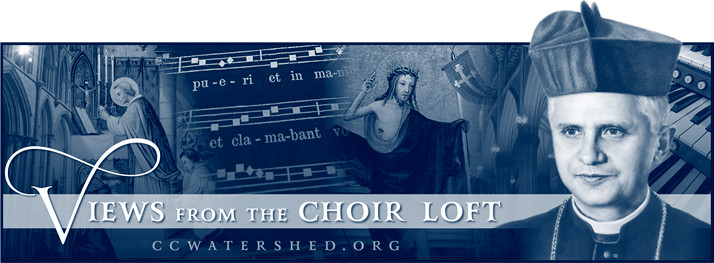 ’M SURE I’M NOT THE ONLY church choir director who prefers to select reusable repertoire. If you’re blessed with a choir full of expert sight-singers, you can learn new motets at will—perhaps even in a single midweek rehearsal. For most of us, though, it’s necessary to select motets weeks ahead of time, plan rehearsal time carefully, and juggle priorities constantly. After putting in hours of work on a motet, you hate to sing it once and then shelve it until next year. So I like to look for motets that could work well on multiple Sundays or feasts.
’M SURE I’M NOT THE ONLY church choir director who prefers to select reusable repertoire. If you’re blessed with a choir full of expert sight-singers, you can learn new motets at will—perhaps even in a single midweek rehearsal. For most of us, though, it’s necessary to select motets weeks ahead of time, plan rehearsal time carefully, and juggle priorities constantly. After putting in hours of work on a motet, you hate to sing it once and then shelve it until next year. So I like to look for motets that could work well on multiple Sundays or feasts. 
Now, the blessed, beautiful season of Advent presents a unique challenge. On the one hand, it consists of only four Sundays, making it difficult to justify spending many hours on repertoire. On the other hand, what a shame it would be to use only general-purpose motets during Advent, turning it into a “fly-over” season while focusing all of our energies on preparing music for Christmas.
One potential solution, of course, is to sing lots of Ave Marias during Advent. Most choirs know at least one, and there are some very accessible settings out there. The advantage of Ave Maria is that it’s general enough to program at pretty much any time of year. This, of course, is also the drawback of Ave Maria; if your congregation has heard you sing a particular setting several times throughout the year, it won’t seem as if the season has changed when they hear you sing it on the first Sunday of Advent.
![]()
An Understated SATB Motet from a Spanish Baroque Composer
I propose a better solution: Alma Redemptoris Mater. As you probably know, it’s the Marian antiphon proper to the entire Christmas cycle. This means it’s in season from the first Sunday of Advent through the Feast of the Purification on February 2. Learn it for Advent, and you’ll actually get about two months’ use out of it.
[In case you missed it, Jeff Ostrowski recently provided 13 organ accompaniments to the plainchant Alma Redemptoris Mater.]
If you know of only one polyphonic setting of Alma Redemptoris Mater, it’s probably the Palestrina:
The Palestrina is fairly accessible, but every choir is at a different level. If you’re looking for another option, consider the setting by the Spanish baroque composer Juan Garcia de Salazar (1639-1710):
Salazar’s understated, introspective motet has been a mainstay of my choir’s repertoire for several years. It’s simple enough that your choir could still learn it for the remainder of the Christmas cycle.
I’ve found only one YouTube recording of this piece, which confirms that it is a hidden gem. This very polished performance incorporates harp, but you don’t have to:
![]()
Insider Tips on Alma Redemptoris Mater
What I love about this piece:
-
It can sit comfortably at a range of tempos. The PDF I provided above puts it in cut time, but we sing it in a moderate four—much like the choir on the YouTube recording.
-
It rises and falls gently, coming to a gradual climax at “peccatorum.”
-
The tenor ends on a 4-3 suspension with Picardy third. I sing tenor as I conduct. It’s like my birthday every time I program this motet.
- It seems more beautiful every time we sing it. It’s not the sort of motet that grabs you on first listening. But did Our Lady ever call undue attention to herself? And who could ever get bored with her?
What to look out for:
-
The alto line dips low. If your choir, like mine, has an alto section composed mainly of sopranos and mezzo-sopranos who have volunteered to help out on harmony, you’ll want to spend a little time working on the timbre and projection of the lowest notes.
-
The alto and bass lines are jumpy. If you don’t have strong readers in these sections, you’ll need to do some solfege work.
-
Several phrases end on group whole notes. You know what I’m going to say next: it’s a challenge to strike a balance between A) giving up on those notes early, and B) dutifully holding “dead” notes for the full four beats. As we all know, it’s not necessary to be mathematical here; I have my choir treat these notes as fermatas. I ask them to maintain good eye contact and listen carefully to the voices around them as they let the sound decay naturally.
Enjoy! I’ve spent an alarming amount of time on Choral Public Domain Library and look forward to sharing more hidden gems in future articles.

